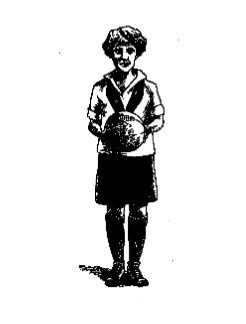THE INSPIRING INCIDENT OF THE BURGUNDY PALMS
I teach at a smallish college in St. Paul, Minnesota. People who walk into my smallish office see: the cover of the July 2004 Lynx Tracks (the promotional magazine of the WNBA’s Minnesota Lynx), with its photo of an airborne Katie Smith, the all-time leading scorer in women’s basketball; the June 25, 2004 issue of Lavender, the gay and lesbian newsweekly of the Twin Cities, with its slightly blurry photo of Lynx reserve center Michele Van Gorp; an uninflated blue, green-and-white basketball with the Lynx’s logo; and a newspaper clipping about the life of Lynx rookie Vanessa Hayden, whose life story is even more inspiring than her clean shot blocks (her grandmother and an attentive coach helped her escape from an Orlando housing project, where her crack-plagued mother died when Vanessa was twelve).
The Lynx, like the NBA’s Minnesota Timberwolves, play in Minneapolis’s Target Center, fifteen minutes by car from the college. Yet none of my students, and almost none of my colleagues, know who Smith, or Van Gorp, or Hayden are. Here’s what they miss:
With 6:42 left in the second half, the Lynx had all but collapsed before the visiting Phoenix Mercury, who, under the command of Rookie of the Year Diana Taurasi, led by a seemingly insurmountable margin—55-35. Lynx coach Suzie McConnell Serio pulled all five Lynx starters, replacing them with Hayden, two other rookies, one defensive specialist, and the rarely-used veteran Stacey Lovelace-Tolbert (whose infant daughter had become a fixture at practice). Hayden positioned herself for a layup, got fouled, missed the free throw. Lovelace-Tolbert shunted the rebound upcourt to another rookie, who hit a three-pointer. Thirty seconds of strong defense led to a block and another rebound for Lovelace-Tolbert and another Lynx three-pointer. Lovelace-Tolbert made a layup, and then another.
Five minutes and a few long-range baskets later, the Lynx trailed by three points, with under a minute to go. In these situations the team that’s behind can foul the team that’s ahead, which stops the clock; the trailing team then has to hope their opponents miss free throws. The Lynx did just that—but the player they sent to the free-throw line was the Mercury’s best shooter, connecting on 86 percent of her freebies. This time, though, she hit just the first of two. Lovelace-Tolbert grabbed the miss, the Lynx called a timeout, and with fourteen seconds remaining fed the ball back to her. She hit another three.
Lynx 58, Phoenix 59. The Lynx fouled again, sending Taurasi, the Rookie of the Year, to the line. A rattled Taurasi missed both free throws; Lovelace-Tolbert was fouled as she snatched a rebound. She then made...
You have reached your article limit
Sign up for a digital subscription and continue reading all new issues, plus our entire archives, for just $1.50/month.
Already a subscriber? Sign in





